#ancient grave
Text
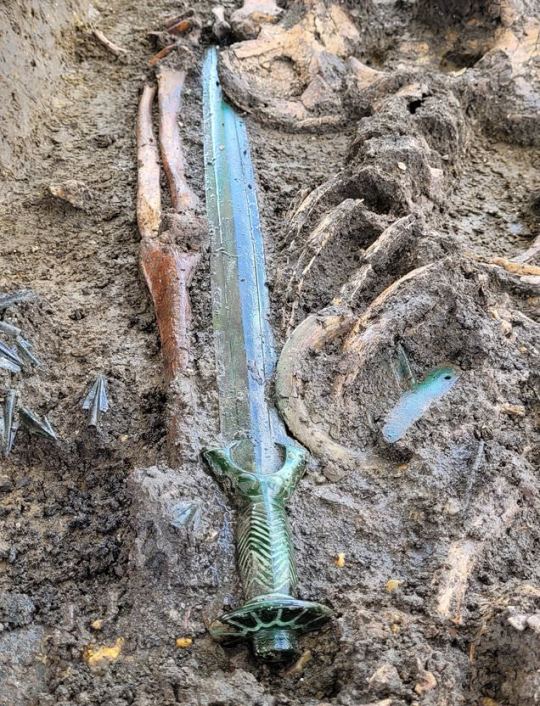
Archaeologists Find a Beautiful 3,000-Year-Old Octagonal Sword in Germany
A rare Bronze Age sword unearthed from a burial site in Germany is in such good condition that it still glimmers.
According to a statement the Bavarian State Office for Monument Protection released on Wednesday, the weapon was discovered in the town of Nördlingen in Bavaria, and may date to the 14th century B.C.
"Last week, archaeologists made a very special find during excavations in Nördlingen: a bronze sword that is over 3,000 years old and is so extraordinarily well preserved that it almost still shines. It is a representative of the bronze full-hilt swords, whose octagonal hilt is made entirely of bronze (octagonal sword type)," a translation of the statement reads.

Its octagonal shape make it a rare find, as only the most skilled blacksmiths were capable of making these types of swords—known as Achtkantschwert in German—that required precise casting and decoration.
"The production of octagonal swords is complex because the handle is cast over the blade (so-called overlay casting). The decoration is made with an inlay and using hallmarks. While there are two real rivets, another pair of rivets are only implied," the statement said.
These rare and specialized swords were only made in two locations in Germany at the time, one in the north, one in the south, although the exact location of this sword's origin could not be confirmed.
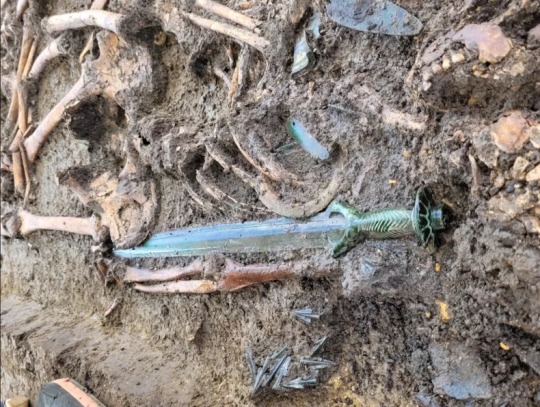
This find is especially unusual considering that most burial mounds in the area of Germany where the sword was discovered have been opened and looted in the past.
"Sword finds from this period are rare and come either from burial mounds that were deliberately opened in the 19th century or as single, presumed sacrificial finds," the statement said.
It is unclear if this octagonal sword was ever used in combat, or if it was a ceremonial blade.
However, archaeologists noted that while the blade had no signs of wear in battle, its center of gravity made it suitable for use as a real weapon, and it was capable of being used to slash opponents.
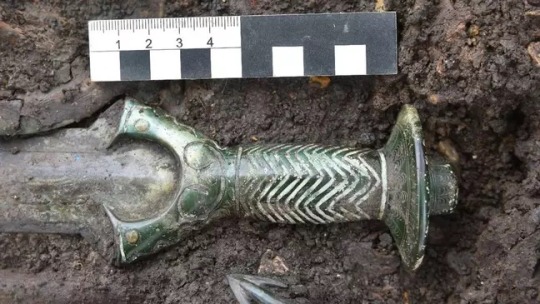
The grave in which the sword was found contained the remains of a man, a woman and a child.
"It is not yet clear whether the persons were related or what the relationship between them was," the statement explained.
Despite these questions, the sword marks an exciting find for the archaeologists and for Germany.
"The sword and the burial still have to be examined further so that our archaeologists can classify this find more precisely. But it can already be said that its condition is exceptional. A find like this is very rare," Mathias Pfeil, head of the Bavarian State Office for the Preservation of Monuments, said in the statement.

#Archaeologists Find a Beautiful 3000-Year-Old Octagonal Sword in Germany#bronze age#bronze Age sword#ancient tomb#ancient grave#ancient artifacts#archeology#archeolgst#history#history news#ancient history#ancient culture#ancient civilizations
3K notes
·
View notes
Photo



(via "A fragment of wilted flowers in a glass vase." Photographic Print for Sale by sackgasse357-50)
#findyourthing#redbubble#ancient grave#transience#decay#cemetery#cemetery beauty#ancient tomb#crystal vase#wilted flowers#glass vase#decomposed
0 notes
Text
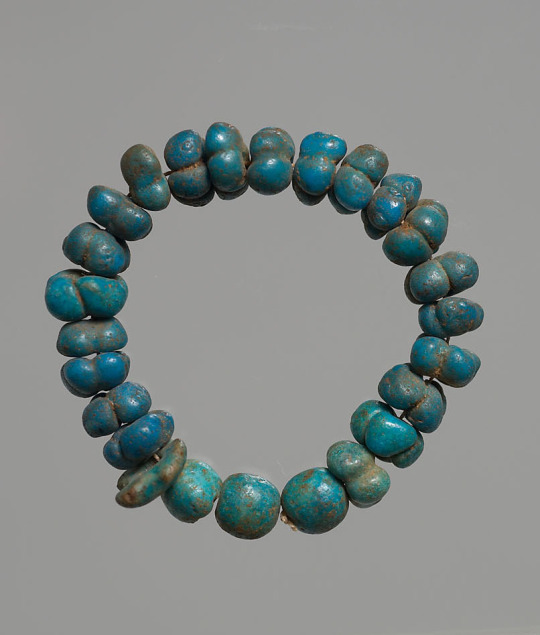

~ Bracelet.
Culture: Egyptian
Period: Middle Kingdom; 12th Dynasty
Date: ca. 1900 B.C.
Place of origin: El-Kubanija North, grave 15 l 1, (Grave of a girl)
Medium: Faience, blue-green
#ancient#ancient art#history#museum#archeology#ancient egypt#ancient history#archaeology#ancient jewelry#egypt#egyptian#bracelet#12th Dynasty#middle kingdom#El-Kubanija#grave of a girl#ca. 1900 b.c.
1K notes
·
View notes
Text

Roman ring with engraved Carnelian gem depicting a youth and his dog, dated to the 3rd-2nd century BC
1K notes
·
View notes
Text



Prehistoric Jet Necklace From A Burial, Mount Stuart, The National Museum of Scotland, Edinburgh
#ice age#stone age#bronze age#copper age#iron age#neolithic#mesolithic#calcholithic#paleolithic#prehistoric#prehistory#grave goods#jet necklace#ritual#ancient living#ancient craft#ancient cultures#archaeology
229 notes
·
View notes
Photo
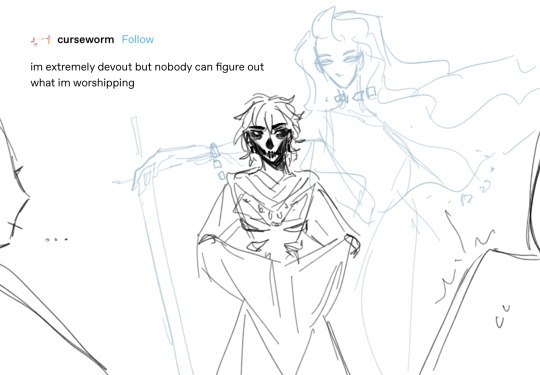
when it’s the scary bone cultist’s turn to say prayers…!
#the locked tomb#tlt#tumblr quotes posting#Harrowhark#Everyone is waiting to see these ancient and secluded practices!!#surely such a dedicated + talented young necromancer wouldn’t commit grave acts against Jod. ;)#ah yes the tomb. The stone that will never and has never been rolled away… that one
783 notes
·
View notes
Text


𝔍𝔬𝔞𝔫𝔫𝔞 𝔎𝔞𝔯𝔭𝔬𝔴𝔦𝔠𝔷
#Joanna Karpowicz#Anubis Dancing#art#painting#Anubis#Ancient Egyptian#god of funerary rites#protector of graves#artwork#illustrations#paintings
307 notes
·
View notes
Text

“Here lies Tiberius Natronius Venustus. He lived 4 years, 4 months, and 10 days”
A tombstone discovered a few years ago in an ancient necropolis near the modern Vatican.
#ancient rome#roman empire#ancient art#ancient history#ancient culture#child grave#scupture#tombstone#ancient civilisations
74 notes
·
View notes
Photo
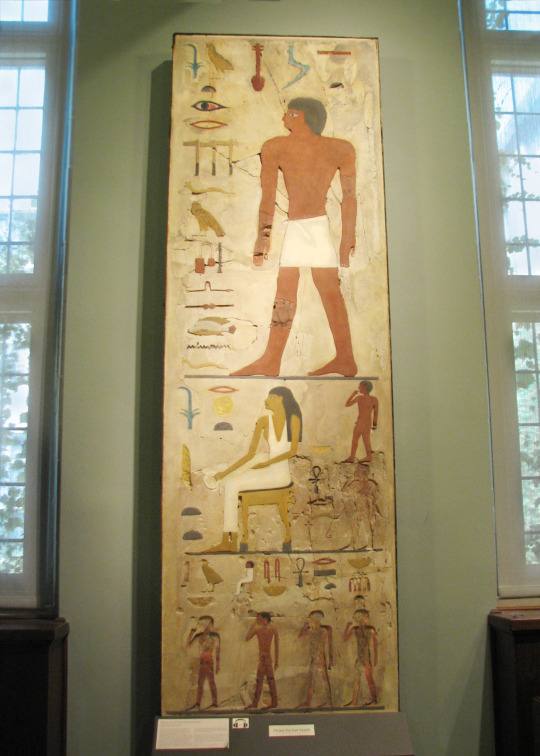
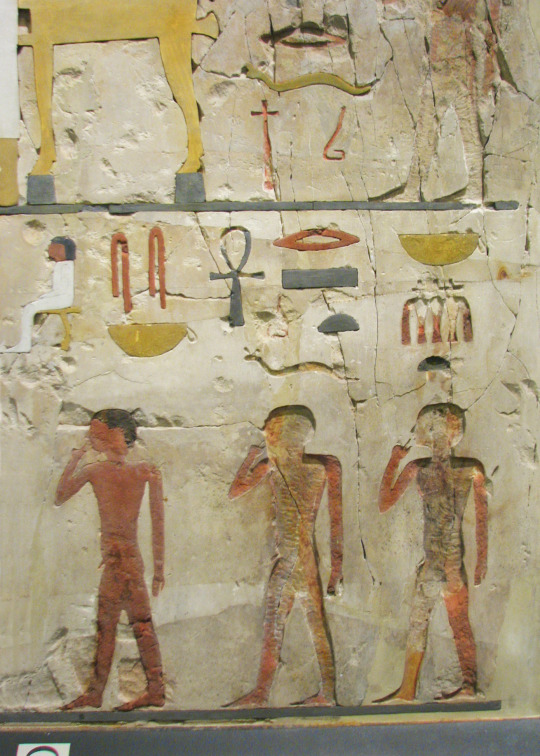
So back when I was much younger and much newer, I took a class at UChicago on ancient Egypt. This was so exciting for me, especially because UChicago has an extensive collection of artifacts from the ancient Near East -- which meant that we got to learn using actual artifacts.
It wasn’t that unusual for us to be sent off to the Oriental Institute to translate something as homework, and one of the things I remember vividly was this (partially restored) fragment of a tomb wall.
In ancient Egypt, names were important, and so was memory. The continued existence of the soul was associated with the continued existence and memory of a person’s name, which is one reason why we have all of these beautiful carved monuments to this day. They wanted to write their names down. They wanted to be remembered. They knew that they could live forever as long as they lived in one person’s memory.
But tombs are expensive. They take a lot of time, a lot of resources, a lot of work. It’s a lot easier to just scratch out one person’s name and replace it with your own. A lot of memorials were repurposed in this way, sometimes because they were actively trying to erase one person’s memory and sometimes simply in an effort to maintain their own. So there was a very real anxiety about tomb desecration and name erasure that comes up again and again and again.
That was what we’d learned about in class that day, but I didn’t know why this wall fragment was our homework until I finished translating it.
I remember sitting there, huddled over my notebook as I crouched on the floor of the OI, sixteen years old and just beginning to learn the world. I remember painstakingly copying the inscription and then translating it to the best of my ability. And then I remember giggling as quietly as I could, not wanting to bother the other guests, when I realized it basically said, “HAHA, I MADE IT SO YOU CAN’T ERASE THIS.”
You see, he’d invented a technique that involved filling the carvings with a certain kind of colored paste. It was very, very difficult to completely remove -- and he was right. No one had managed to do it.
I remember sitting there on the floor and laughing and thinking to myself that humans don’t change, not really. We don’t ever, ever change. Our beliefs might and our goals might, but people? Our souls can traverse millennia.
Because over four thousand years had passed but I still felt this odd connection to a man whose pride in his own ingenuity had made me laugh.
This all happened around fifteen years ago and I no longer remember how to read this wall. But you know what I do remember? His name.
I remember you, Nefermaat.
#I FOUND HIM#I found a site that talked about this exact wall fragment#so I decided to turn it into a post and share it with you#so you can remember him too#and his wife Itet at that#I ended up switching majors because I realized that I had ethical concerns with the discipline#and I felt complicit in things like imperialism and grave robbing#but I still remember this guy :)#ancient egypt
711 notes
·
View notes
Note
For the doodles, you know I have to ask for some Achilles and Patroclus ~~

here you go
#i almost went searching for historically accurate ancient Greece graves#but then I realized how much work I was putting for a shitpost#gigi's asks#digital art#art#achilles#patroclus#achilles and patroclus#greek myths
228 notes
·
View notes
Text
The resting place of Nicholas Copernicus was once lost but was found through a blend of history, science, and detective work, showcasing the power of persistence and modern technology in solving the mysteries of the past.
Discover how archaeologists and scientists pieced together clues to finally locate the final resting place of the man who placed the Sun at the center of our universe.
69 notes
·
View notes
Text
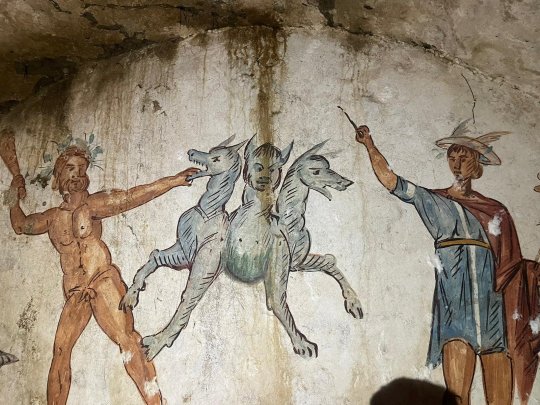
The Sealed 2,000-Year-Old Tomb of Cerberus Discovered in Naples
A sealed tomb that dates back millennia has been discovered in Italy in extremely good condition and contains surprisingly well-preserved artwork.
The 2,000-year-old tomb, which is in near perfect condition, was discovered during archaeological surveys ahead of construction works in the municipality of Giugliano in Campania, near Naples.
Inside the tomb, archaeologists found many frescoes covering the walls depicting various scenes from ancient mythology, the Italian Ministry of Culture said in a statement detailing the finds.
One painting represents the three-headed dog, Cerberus-a creature from Greek mythology, described as the hound of Hades, the god of the underworld. In mythology, Cerberus famously guarded the gates to the underworld.
The tomb has therefore been named the "Tomb of Cerberus." The specific scene depicted in the tomb tells the tale of when Hercules came to Hades to capture Cerberus.


Other frescoes show more scenes from Greek mythology, including one featuring ichthyocentaurs- sea creatures that had the upper body of a human, the lower body of a horse, and the tail of a fish.
This painting shows two of the creatures turned towards each other, holding a shield. A cupid-like creature is also in the painting, near the creature's arm.
"The emotion aroused by the privilege of such a discovery is indescribable. The work that keeps the superintendency engaged in its tireless protection actions and the passion shown by archaeologists in the field have finally received worthy recognition today," a statement from the superintendent of archeology, fine arts and landscape said.
The territory of Giugliano, after years of oblivion, is finally returning significant vestiges of its glorious past, to be preserved and protected, thanks to a common effort," the statement continued.
Burial practices 2,000 years ago were often grand, depending on the person being buried. Nobles and people of importance were usually interred in multi-roomed tombs, adorned with decorations and objects.
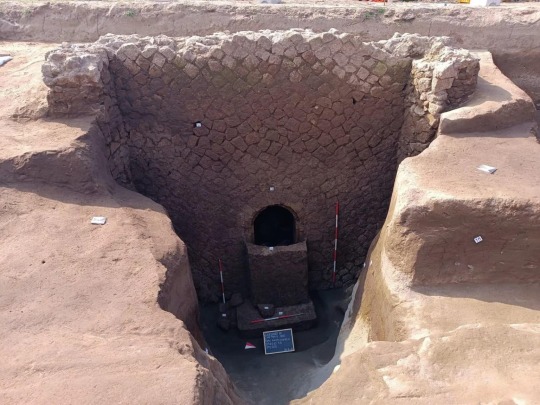

There is not yet any indication of who this tomb may have belonged to, but archaeologists will continue to excavate in order to learn more about its history and purpose.
Aspects of Greek mythology depicted in the tomb were widely adopted by the ancient Romans thousands of years ago.
Around 2,000 years ago, when many people worshiped the ancient Greek gods, art and other objects were often inspired by the gods and the surrounding mythology.
#Tomb of Cerberus#The Sealed 2000-Year-Old Tomb of Cerberus Discovered in Naples#ancient grave#ancient tomb#ancient necropolis#ancient artifacts#archeology#archeolgst#history#history news#ancient history#ancient culture#ancient civilizations#ancient art#ancient naples#roman history#roman empire
442 notes
·
View notes
Photo
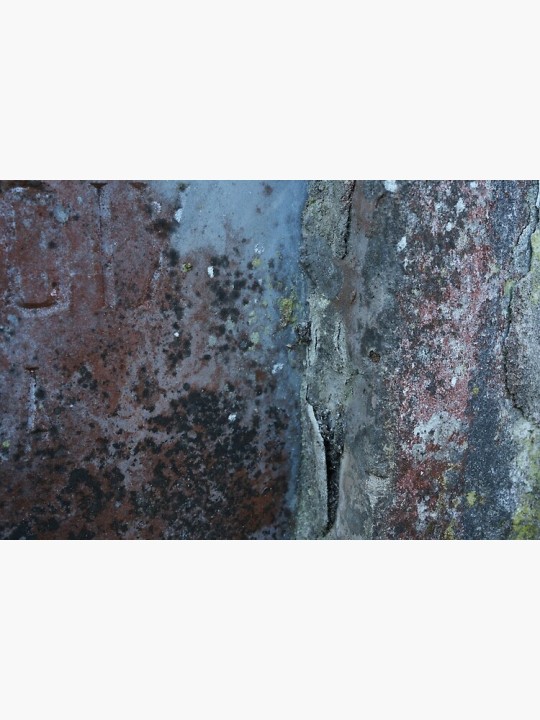
(via "Composition of crumbling gravestone." Art Print for Sale by sackgasse357-50)
#findyourthing#redbubble#gravestone#cemetery#ancient tomb#ancient grave#marble#decay#transience#artwork#photoart
0 notes
Text

~ Painted cow skull (bucranium).
Culture: Nubian
Period: Pan-Grave
Date: 1700–1550 B.C.
Mrdium: Bone and pigment
#ancient#ancient art#history#museum#archeology#ancient history#archaeology#nubia#nubian#pan grave#bucranium#1700 b.c.#1550 b.c.
561 notes
·
View notes
Text

Detail of wooden mortuary statue of Ka'aper, priest and scribe during the 5th dynasty, 2500 BC.
110 notes
·
View notes
Text


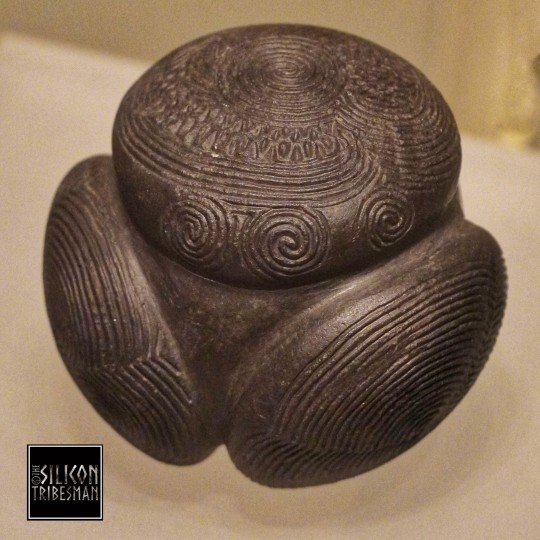
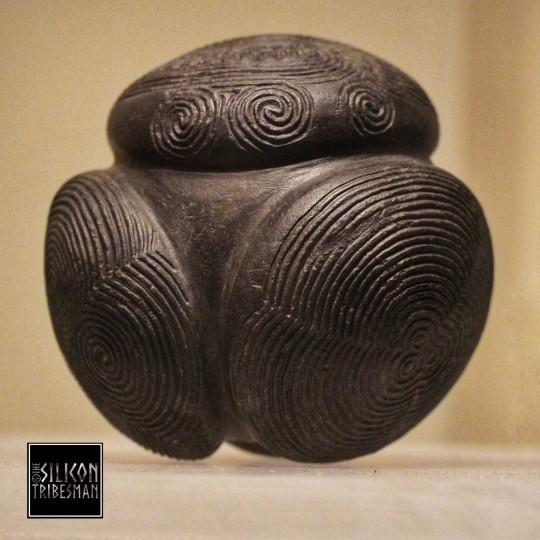


The Towie Neolithic Petrosphere, The National Museum of Scotland, Edinburgh
#ice age#stone age#bronze age#copper age#iron age#neolithic#mesolithic#calcholithic#paleolithic#prehistoric#prehistory#stone carving#petrosphere#grave goods#ancient living#ancient craft#ancient cultures#archaeology#Scotland#Edinburgh
152 notes
·
View notes